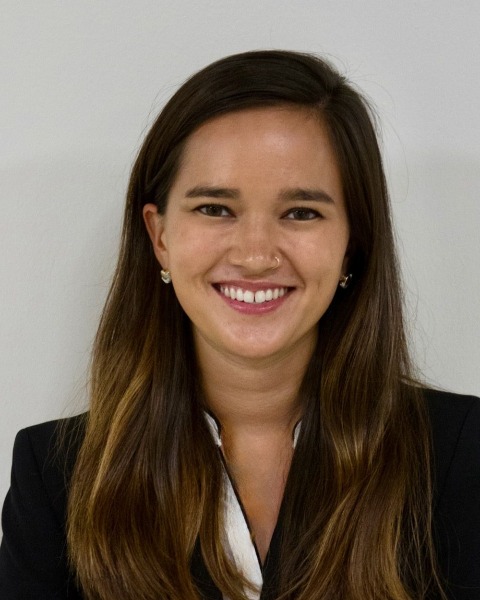Children with Chronic Conditions 4
Session: Children with Chronic Conditions 4
472 - Characterizing Hospitalizations for Feeding Intolerance in Children with Medical Complexity
Monday, April 28, 2025
7:00am - 9:15am HST
Publication Number: 472.4130
Katherine B. Tygart, University of California, San Diego School of Medicine, San Diego, CA, United States; Aarti Patel, University of California San Diego, San Diego, CA, United States; Begem Lee, UCSD/Rady Children's, San Diego, CA, United States; Amanda R. Dube, Rady Children's Hospital San Diego, San Diego, CA, United States; Tatyana G. Mills, University of California, San Diego School of Medicine, San Diego, CA, United States; Rachel Marano, Rady Children's Hospital San Diego, San Diego, CA, United States; Michelle Edmunds, UCSD/Rady’s Children Hospital, San Diego, CA, United States; Michelle Polich, University of California, San Diego School of Medicine, San Diego, CA, United States; Tiranun Rungvivatjarus, Rady Children's Hospital/UCSD, San Diego, CA, United States; Jocelyn Young, University of California, San Diego School of Medicine, San Diego, CA, United States; Elizabeth Mannino Avila, UCSD/Rady Children's Hospital San Diego, San Diego, CA, United States

Katherine B. Tygart, MD (she/her/hers)
Pediatric Hospital Medicine Fellow
Rady Children's Hospital San Diego
San Diego, California, United States
Presenting Author(s)
Background: Children with medical complexity (CMC) have high rates of gastrointestinal co-morbidities and enteral tube dependence, with frequent admissions for feeding intolerance. There is no evidence-based standardized approach to feeding intolerance in this population, and the variation in clinical characteristics and practice has not been well-described.
Objective: Describe characteristics and variation in management of CMC receiving exclusive enteral nutrition (EEN) via enteral tube and hospitalized for feeding intolerance.
Design/Methods: This was a single-center retrospective chart review of CMC patients on long-term EEN via enteral tube admitted for feeding intolerance at a tertiary freestanding children’s hospital from July 2020 to June 2024. Feeding intolerance was defined as symptoms of intestinal dysfunction and prolonged inability to achieve goal enteral intake (return to prior home regimen or diet at time of discharge).
Exclusion criteria included admission to non-hospitalist service; diagnosis of short gut syndrome, acute pancreatitis, or parenteral nutrition dependence; or presence of non-gastric enteral ostomy. We conducted data pull and manual chart review. Primary outcomes included length of stay (LOS), hospital charges, time to goal feeds, and 30-day all-cause emergency department (ED) return and re-admission rates.
Results: For the 196 included encounters, median age was 4.1 years (IQR 1.8, 8.0) (Table 1). Most patients were female (55%, 108/196), identified as white (54%, 106/196), and had public insurance (68%, 134/196). Only 12% (24/196) had a gastrojejunostomy tube (Table 2). Most patients (88%, 172/196) were initially placed on complete bowel rest with median NPO time of 20.5 hours (IQR 15.1, 34.8). Most patients (72%, 141/196) were initially started on electrolyte rehydration solution. Median LOS was 4.6 days (IQR 2.8, 8.6). Median time to reach target enteral intake was 3.6 days (IQR 2.1, 6.7). All-cause 30-day return rate was 40% for ED visits and 34% for re-admissions. For LOS and 30-day all-cause return rates, there was no significant statistical difference between patients who were initially NPO versus started on a diet, or between patients who were initially started on electrolyte versus formula-containing solution (Table 3).
Conclusion(s): CMC with feeding intolerance have highly variable clinical characteristics and management. Further investigation is needed to determine what clinical practices may lead to improved outcomes.
Table 1: Demographics of CMC Admitted with Feeding Intolerance
.png) IQR = interquartile range.
IQR = interquartile range.Other Race: Other or Decline to Answer.
Other Language: Arabic, Swahili, Vietnamese, Chinese, Pashto, Somali, or Romanian.
Table 2: Clinical Characteristics of CMC Admitted with Feeding Intolerance
.png) NPO = nil per os. TPN/PPN = total parenteral nutrition/peripheral parenteral nutrition. LOS = length of stay. ED = emergency department.
NPO = nil per os. TPN/PPN = total parenteral nutrition/peripheral parenteral nutrition. LOS = length of stay. ED = emergency department.Other Formula: Home blend, breastmilk, or more than 2 formula types.
Other Initial Enteral Solution: water, or formula strength other than 1/4, 1/2 or full.
Table 3: NPO status and Initial Enteral Solution Outcomes
.png) NPO = nil per os. IQR = interquartile range. LOS = length of stay. ED = emergency department.
NPO = nil per os. IQR = interquartile range. LOS = length of stay. ED = emergency department.Table 1: Demographics of CMC Admitted with Feeding Intolerance
.png) IQR = interquartile range.
IQR = interquartile range.Other Race: Other or Decline to Answer.
Other Language: Arabic, Swahili, Vietnamese, Chinese, Pashto, Somali, or Romanian.
Table 2: Clinical Characteristics of CMC Admitted with Feeding Intolerance
.png) NPO = nil per os. TPN/PPN = total parenteral nutrition/peripheral parenteral nutrition. LOS = length of stay. ED = emergency department.
NPO = nil per os. TPN/PPN = total parenteral nutrition/peripheral parenteral nutrition. LOS = length of stay. ED = emergency department.Other Formula: Home blend, breastmilk, or more than 2 formula types.
Other Initial Enteral Solution: water, or formula strength other than 1/4, 1/2 or full.
Table 3: NPO status and Initial Enteral Solution Outcomes
.png) NPO = nil per os. IQR = interquartile range. LOS = length of stay. ED = emergency department.
NPO = nil per os. IQR = interquartile range. LOS = length of stay. ED = emergency department.
